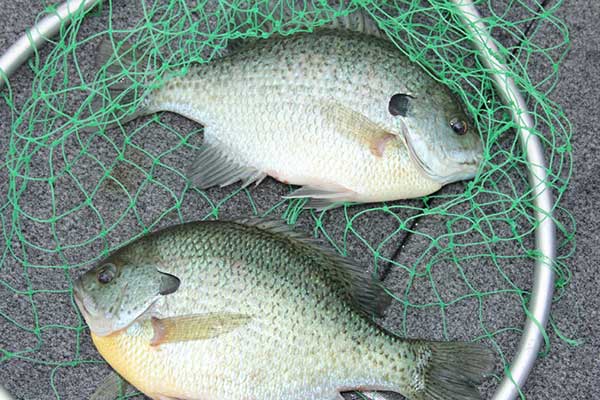By Louie Stout
 Wisconsin study suggests bluegill can be overharvested.
Wisconsin study suggests bluegill can be overharvested.
When Indiana fish managers revisit a proposal to set a bag limit on bluegills, they might want to look at a Wisconsin study.
That study dismisses the long held belief that if you don’t harvest a lot of bluegills, you wind up with a pond or lake full of stunted bluegills.
In fact, say Wisconsin scientists, there is evidence that overharvest can result in smaller bluegill.
So, what does that have to do with Indiana?
As you may recall, the DNR tendered a proposal a couple of years ago to see how receptive Hoosiers were to a 25-fish-a-day bag limit.
A growing number of anglers have voiced opinions over the years that they believe some lakes are being overharvested because of the unlimited bag limit currently on the Hoosier books.
The proposal was preliminarily adopted through the vetting process, but some Hoosiers raised a legitimate concern, according to DNR Chief of Fisheries Brian Schoenung.
“Quite a few people vacation in Indiana with their families, and the way the possession limit was worded in the proposal, it would have restricted people in how many fish they could take home after a vacation,” he said. “We didn’t want to impact people’s vacation or recreational opportunities.”
For that reason, biologists withdrew the proposal to make necessary changes and will resubmit it when new rules are proposed again in the next couple months. It will have to go back through the vetting process, which means we probably won’t see a change this summer.
Schoenung said biologists have wanted a bluegill bag limit for some time.
“We know that to a certain extent you can overfish a bluegill population but it’s the predators (bass, pike, walleye, etc.) that control it,” the fish chief said. “On the other hand, anglers can crop off the quality bluegill numbers. This regulation will be a step toward improving quality harvest and eliminating excess harvest that can depress the amount of quality bluegills in a system.”
And that’s what the Wisconsin study bore out.
Biologists have believed for years that fishing pressure kept a lake from becoming overpopulated with slow-growing panfish. By thinning out the small ones, the survivors had more to eat and grew faster.
Wisconsin DNR researcher Andrew Rypel said new info suggests excessive fishing pressure may actually be having the reverse effect on overall fish size.
“Our managers have observed a long-term demise in panfish size,” Rypel told Michigan Outdoor News. “We looked at size data we had on bluegills, yellow perch and crappie and found that all have been declining for the past 70 years. That’s a management problem we are dealing with. You can see it on a regional level as well as individual lakes.”
Wisconsin, like Michigan, has a 25-fish bag limit.
“That’s still pretty high when you consider the life history of some of those species,” Rypel said. “We’re starting to get better age data on bluegills and finding that some live to be in their mid-teens.”
Rypel believes intense fishing pressure on spawning beds may be a major factor that’s decreasing the size of the fish.
To test that theory, Wisconsin limited the bag limit to 10 fish on 10 test lakes over a period of three to eight years. The fish were measured before and after the regulation went into play.
The results were eye-openers. Bluegills in the test lakes increased an average of .8 of an inch up to one-half inch during sampling periods.
That’s pretty impressive but not conclusive. So, Wisconsin is expanding its study on 100 lakes. One third will have a 10-fish limit, another third a 5-fish limit and another lake will have a reduced bag limit only during the spawning season. The test will run for 10 years and biologists hope it will provide additional insight as to the effect that different bag limits have on panfish size.





